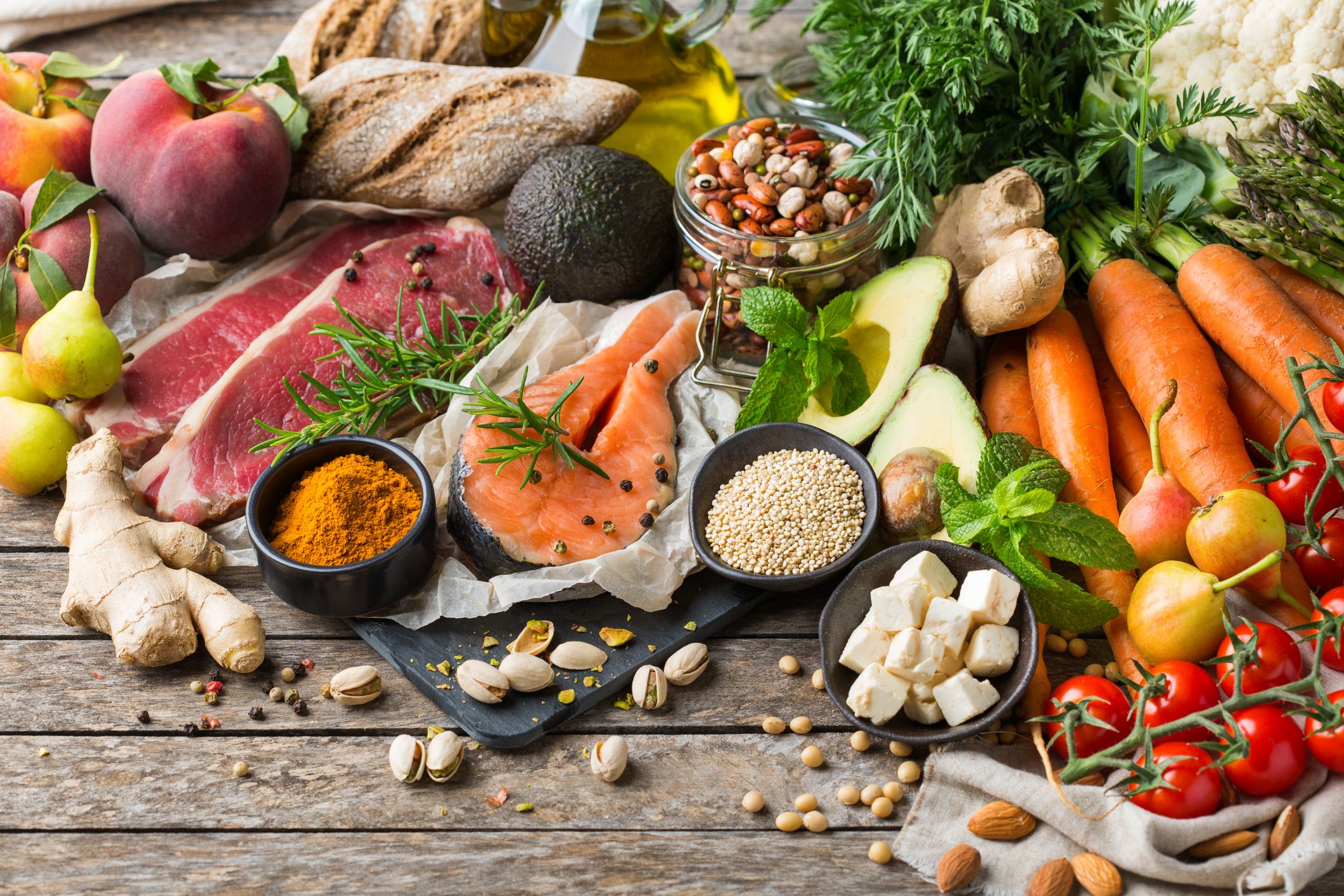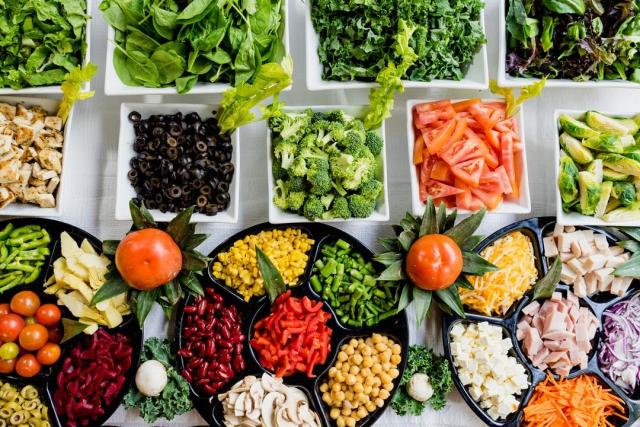A 2020 Gallup survey found 23{3ce0ad748aa90072994365178fd728c9d7c9d879343909fd1337f07a6240cc7d} of Americans had cut down on meat in the previous year, with many turning to plant-based alternatives.1.
No formal meaning of a semi-vegetarian diet plan exists. Being a semi-vegetarian– also known as a “flexitarian” (or “versatile vegetarian”)– frequently implies you mainly consume plant-based foods and occasionally consume chicken, fish, dairy products, and eggs, and rarely (if ever) consume red meat. Semi-vegetarianism intends to minimize, rather than remove, your meat consumption by concentrating on plant-based foods.2.
Here’s how embracing a semi-vegetarian diet plan can enhance your health– and the health of the world.
What Is a Flexitarian?
A semi-vegetarian or flexitarian diet plan would theoretically suggest being a part-time vegetarian. This implies an individual follows a vegetarian diet some or even the majority of the time however does not dedicate to it completely. That might imply allowing eggs and dairy everyday or often however restricting meat, poultry, and seafood to whatever feels right for you.
Unlike semi-vegetarian, the terms vegan and vegetarian have formal definitions.
Veganism excludes all animal items, suggesting no meat, poultry, seafood, eggs, dairy, or any active ingredients stemmed from animal sources, consisting of honey and gelatin.3 Veganism may likewise encompass a lifestyle that includes not utilizing any materials originated from animals, including leather, fur, wool, and silk, nor cosmetics or soaps made with or tested on animals.
Vegetarianism usually means that no meat, poultry, or seafood is consumed, however eggs and/or dairy are consisted of, with no specified quantity or frequency. Beyond veganism and semi-vegetarianism, other types of a vegetarian diet plan consist of:3.
Lacto-vegetarianism: A diet of plant foods and some or all dairy products.
Lacto-ovo vegetarianism: A diet plan of plant foods, dairy items, and eggs.
Pescatarianism: A diet plan of plant foods and seafood.
Vegetarians might also take in meat alternatives, ranging from whole foods like lentils or beans to synthetic meats like veggie burgers.
Some flexitarians don’t consume dairy however eat eggs and seafood. Others prevent eggs but include yogurt or cheese and use animal-derived collagen or take a fish oil supplement.
A semi-vegetarian diet plan can technically include any mix of vegetarian and animal-based foods. Still, the more plant-based food you have in your diet plan, the more you’ll likely benefit health-wise.2.
For this factor, it might be best to lay out some sort of structure, such as eating vegetarian Monday through Friday, consuming 2 vegetarian meals a day, or making all home-cooked meals vegetarian.
Health Benefits of a Flexitarian Diet.
In a 2020 Gallup study, the top factor mentioned for consuming less meat was health, with nine out of 10 individuals calling it as a factor.1 Trading meat for nutrient-rich, plant-based alternatives regularly can play a substantial role in safeguarding your health. For example, consuming less meat can minimize high blood pressure.3.
A 2019 meta-analysis took a look at plant-based eating patterns, specified as eating more plant- and less animal-based foods, and the incidence of type 2 diabetes.
The scientists found that plant-based dietary patterns were linked to a lower threat of type 2 diabetes, even after adjusting for body mass index (BMI), meaning the result applied regardless of body weight.4.
In a 2020 study, scientists took a look at information from more than 400,000 people in the U.S. over a 16-year period. They found that a higher intake of plant protein was connected with a lower danger of death from all triggers.5 The link especially applied for heart problem, which remains the primary killer in the U.S. 6.
Research study also shows that exchanging animal protein for plant protein improves a number of heart problem threat aspects, including cholesterol, body weight, and body fat percentage.78.
In a 2020 Stanford study, individuals were asked to consume two or more portions per day of either animal protein (primarily red meat) or Beyond Meat (a plant-based “meat”) for two months while keeping all other foods and drinks as similar as possible. The topics then consumed the reverse pattern for another 8 weeks.9.
The researchers of the Stanford research study found that compared to meat, Beyond Meat usage improved cardiovascular disease threat elements. Effects included a decrease in “bad” LDL cholesterol, modest weight loss, and lower blood levels of a substance connected to blood vessel inflammation.
Foods To Include.
A 2019 study followed over 800 individuals who were either vegans, lacto-ovo vegetarians, semi-vegetarians, or non-vegetarians. Scientist discovered vegans had higher levels of healthy fats, anti-oxidants, and anti-inflammatory compounds in their bodies. The result was most likely due to the fact that vegans consume more whole plant-based foods, including fruit and vegetables, whole grains, nuts, and pulses.9.
Pulses– the umbrella term for beans, lentils, peas, and chickpeas– are a filling, nutrient-rich, and versatile plant protein choice. This food group has actually been revealed to support healthy weight management and weight loss, even when a diet isn’t planned to reduce calories.10.
Therefore, you’ll want to go with pulse-based meals like lentil or black bean soup and bean and vegetable chili or stew. You could change meat, seafood, or poultry with chickpeas or black-eyed peas in a stir fry, salads, and grain bowls.3.
A balanced semi-vegetarian diet must include the following foods each day:113.
Three to 5 portions of vegetables.
2 to 3 servings of fruit.
A variety of nuts and seeds.
Entire grains such as oats, quinoa, and brown or wild rice.
Foods To Eat in Moderation.
The animal items you choose to consist of in your flexitarian diet plan are ultimately approximately you, but red meat is usually dissuaded. If you opt for vegetarian meat alternatives, keep an eye on their sodium levels.3.
With so lots of plant-based products on the market, consuming meatless meals is simpler than ever. However, filling your cart with frozen vegan pizzas and mac and cheese isn’t the very best method to take advantage of a more plant-based diet.3.
In general, it’s finest to restrict foods with high levels of unhealthy fats, salt, and sugar. Many plant-based meat replacements do not have the healthiest dietary profile.12 Plant-based goodies, like vegan ice cream and baked items, are great as periodic treats, however they shouldn’t crowd out whole, nutrient-rich plant foods.
To get more essential nutrients, attempt switching out white rice, bread, and pasta for whole grains.3.
Threats and Limitations of a Flexitarian Diet.
Some individuals who adopt flexitarian diet plans might have eating conditions or depression. Contact a doctor if you show indications of disordered eating or other mental health concerns.13.
When switching to a flexitarian diet plan, you need to guarantee you’re getting all the nutrition you require. The following groups of people may require to prepare their diets more carefully:3.

Older grownups.
People who are pregnant or breastfeeding.
People with health conditions.
Teens and young children.
People who come from any of the above classifications– particularly teens and pregnant individuals– need to deal with a registered dietitian if they want to change to a flexitarian diet plan.
If you find it difficult to get specific nutrients, attempt some of the following suggestions to incorporate them into your diet.
How To Get Enough Nutrients.
Just as it is essential to select the ideal foods if you mean to follow a semi-vegetarian diet, it is important to get adequate nutrients in your diet.
Depending on how you plan to become a semi-vegetarian, you’ll want to guarantee you get vitamins and minerals such as vitamins B12 and D, zinc, iron, calcium, omega-3 fats, and protein. The following are a few examples of foods that can assist you develop those nutrients:3.
Vitamin B12: Eggs, dairy items, nutritional yeast, seafood.
Vitamin D: Fatty fish, egg yolks.
Zinc: Beans and beans, nuts and seeds, seafood, yogurt, or cheese.
Iron: Beans and beans, green vegetables, dried fruit, whole grains.
Calcium: Sardines and canned salmon, dairy items, green vegetables, almonds, oranges, figs, tofu.
Omega-3 fats: Fatty fish, nuts and seeds, soybeans, and soy oil.
Protein: Soy foods, vegetarian meat replacements, legumes, beans, lentils, nuts or nut butters, seeds, entire grains, dairy items.
Furthermore, consuming fortified foods that contain the nutrients above, and taking supplements, if needed, can also help you get enough nutrients in your system.
Flexitarianism Helps the Planet.
The climate crisis is a public health emergency, and consuming fewer animal-based foods is part of the option.
A Harvard report called The EAT-Lancet Commission on Food, Planet, Health, which requires a primarily plant-based diet, states, “Food is the single greatest lever to optimize human health and ecological sustainability.” 14.
The ecological impact of meat usage consists of the production of greenhouse gas emissions from animals, a greater use of natural resources (consisting of water and fuel) compared with plant food sources, and contamination of water, air, and soil.15.
A 2019 research study discovered that meatless meals have more than a 40{3ce0ad748aa90072994365178fd728c9d7c9d879343909fd1337f07a6240cc7d} decrease in environmental impacts. These consist of carbon footprint, water usage, resource consumption, health impacts of pollution, and community quality. Merely consuming one plant-based meal daily can have a considerable environmental impact.
How To Start a Semi-Vegetarian Diet.
The advantages of being a semi-vegetarian are numerous. If you’re just starting, attempt this three-step technique.
Create a prepare for which animal-based foods you ‘d like to keep and which you’re ready to quit (even for a 30-day trial). Do the exact same for which plant-based options you wish to consume regularly.
Choose roughly the number of vegetarian or entirely plant-based meals you ‘d like to consume daily or each week.
Look for healthful, go-to alternatives, including recipes, items to try, and takeout, or meal package and shipment selections. Have fun experimenting, and take notice of how your body responds.
If you have any unique dietary needs, such as food allergic reactions, or a medical condition that requires a restorative diet plan, consider talking to a registered dietitian who can customize a semi-vegetarian diet to your body’s requirements.



